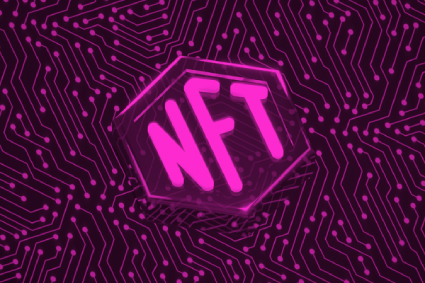Learning about bitcoin, especially at first, can feel like trying to gain access to a fortress of knowledge. There are pitfalls, obstacles, and misinformation along the way.

One of the biggest reasons it’s challenging to get to the bottom of bitcoin (which is true for other cryptocurrencies/digital ledger technology systems) is that bitcoin isn’t just some kind of financial product or fintech app.
Instead, bitcoin is a feat of financial engineering and computer science that is often presented as a new kind of mysterious consumer tech. However, bitcoin is about more than money. It’s a new, digitally native mashup of computer science, finance, and macroeconomics. These topics are dense on their own but made even more complex when combined.
However, when fully implemented and adopted at a broader scale, bitcoin will present an alternative to the massive corporate monopolies that command and control today’s internet.
Bitcoin and the need for cryptocurrency alternatives can feel dense at first pass. One tactic to gain a deeper understanding is to figure out the problems they solve and then work backward to the technology.
Five major attributes of bitcoin
1. Bitcoin is peer-to-peer
Bitcoin is the first globally adopted decentralized cryptocurrency. Since nothing like it ever came before, much attention is given to the Bitcoin whitepaper, which laid out the Bitcoin network’s architecture and explained how the bitcoin currency would work.
The full title of the bitcoin whitepaper is “Bitcoin: A Peer-to-Peer Electronic Cash System.” In the years since the launch of bitcoin, several other use cases or narratives have been attributed to it (such as an alternative investment class, a digital store of value, and a viable a-political global reserve currency). Still, it’s imperative to understand the original vision for bitcoin was to use the network and the currency. It enables a way for people to send value back and forth across the internet without having to know one another, trust one another, or utilize trusted third parties like a payment app, a bank, or a credit card company.
While bitcoin has become a lot of things since its creation in 2009, it is still fundamentally an innovation that allows for direct digital interactions that are secure, private, and cash-like.
2. Bitcoin has no “off” switch
Because of its unique architecture and incentive structure for upkeep and maintenance, bitcoin is like the computer network version of a machine that keeps on chugging.
There is money to be made (in the form of block rewards) by “mining” bitcoin. Mining is just a fancy way of saying network transaction processing and upkeep. Even after the last new bitcoin is issued to miners in 2140, miners will be able to profit from the network’s transaction fees.
Since bitcoin is run over a globally distributed system, network participation is “permissionless,” meaning anyone can join. The distributed nature of the network makes it resilient to things like natural disasters and attacks but also things like political and policy changes.
Against what feels like a rapidly changing world, the steadiness and reliance of the Bitcoin network — for financial and data activities — is a significant attribute.
3. Bitcoin is decentralized
One of the reasons that Bitcoin is such a powerful idea and technology is that it allows people, for the first time, to coordinate globally without any hierarchy. Instead, bitcoin is a flat organization structure in that anyone can join, participate in the network, run a node, or create a wallet without any permission, background check, or affiliation.
No corporation, person, ruler, executive, or organization controls bitcoin. No one owns a Bitcoin data center (because there is no Bitcoin data center), and no board members are calling the shots. Instead, the entire global network operates by people who opt-in to run a node, and it’s governed by “miners” who maintain the record of bitcoin transactions in exchange for a fee.
Bitcoin is a decentralized financial network resulting from the proof-of-work (POW) consensus mechanism. POW makes real-time global coordination possible without intermediaries, referees, or officials because it aligns the tasks required to complete the network growth (confirming and storing transactions) with the network’s overall health. In other words, people who actively participate in the network can share its increasing value and utility as more people adopt bitcoin.
POW is computationally intensive, which also makes it energy intensive. A significant critique of bitcoin is that it does require energy. But for many, the safety net of a global financial network that is outside of the hands of politicians, corporations, and bureaucrats — and is incredibly resilient to physical disruption because it is so distributed — is worth the trade-off. Over time, the emissions profile of bitcoin is trending toward renewables or energy waste capture as those methods of fueling the necessary computation of bitcoin are more cost-effective than consuming fossil fuels, which are skyrocketing in price.
4. Bitcoin is deflationary
Over time, bitcoin is designed to become more scarce. The baked-in scarcity will drive the price of bitcoin, attracting more users to the network and enforcing the underlying scarcity.
In a world of unprecedented financial tinkering by central banks and financial institutions, a monetary system backed and enforced by computer code is a welcome change.
New bitcoin enters circulation via the block rewards issued after new blocks are confirmed to the Bitcoin blockchain. Every four years, the block reward is reduced by half. Right now, the reward is 6.25 BTC. In 2024, the reward will decrease to 3.125 BTC.
Another monetary control is bitcoin’s fixed supply, which is 21 million. Due to its predetermined issuance schedule, the last coin of the 21 million BTC supply will be rewarded in 2140. After that, miners will still confirm transactions and be paid transaction fees rather than block rewards.
As prices of staple goods are rising worldwide following the post-pandemic inflation, having a long-term deflationary asset is even more attractive and needed.
5. Bitcoin is a protocol for a tech stack
One of the most extensive critiques of bitcoin is that it is not scalable or that there will be some “bitcoin killer” in the future that can easily replace it by being a bigger, faster, cheaper version of what bitcoin offers.
But bitcoin is a protocol or a base layer of the emerging decentralized internet. Trying to unseat bitcoin the protocol as a cornerstone would be like trying to get everyone to switch underlying from the protocol that underpins the current internet (TCP/IP) to something else. Indeed, other options exist, but switching protocols seems unlikely because so much is built using the current internet infrastructure. Similarly, so many people have adopted bitcoin. They are building products and services for the ecosystem because the Bitcoin network has a massive first-mover advantage and is here to stay.
In terms of scalability, bitcoin is scalable via “layer two” applications, which can be built on top of the primary protocol. The Bitcoin Network is like the U.S. Constitution. It’s designed to be challenging to change and modify but can also be upgraded or kept current via amendments.
Layer two technologies are like amendments to the underlying Bitcoin protocol that make it better and address new needs without sacrificing the network’s security or integrity.
Many of Bitcoin’s layer two tech addresses scalability. For example, the Lighting Network makes it cheaper and faster to make bitcoin payments. Taproot, another layer two technology, helps give Bitcoin smart contract-like functionality, enabling other kinds of apps to be built on top of the Bitcoin network.
Learn more and additional bitcoin resources
In many ways, bitcoin is like a thread tied to many other things in the world. So it’s more than just another internet tech or a new payment app. Instead, bitcoin (and crypto more broadly) is more like a giant intersectional technology that will touch or impact many things we do in everyday life.
Here are a couple of recommended action items to help you continue on your bitcoin journey:
- First, check out the Bitcoin explainer from CoinDesk.
- Then, take the Crypto Literacy quiz to see how your knowledge stacks up.
- Finally, follow the Crypto Literacy Month social media and check out the rest of the educational content planned for this month.



